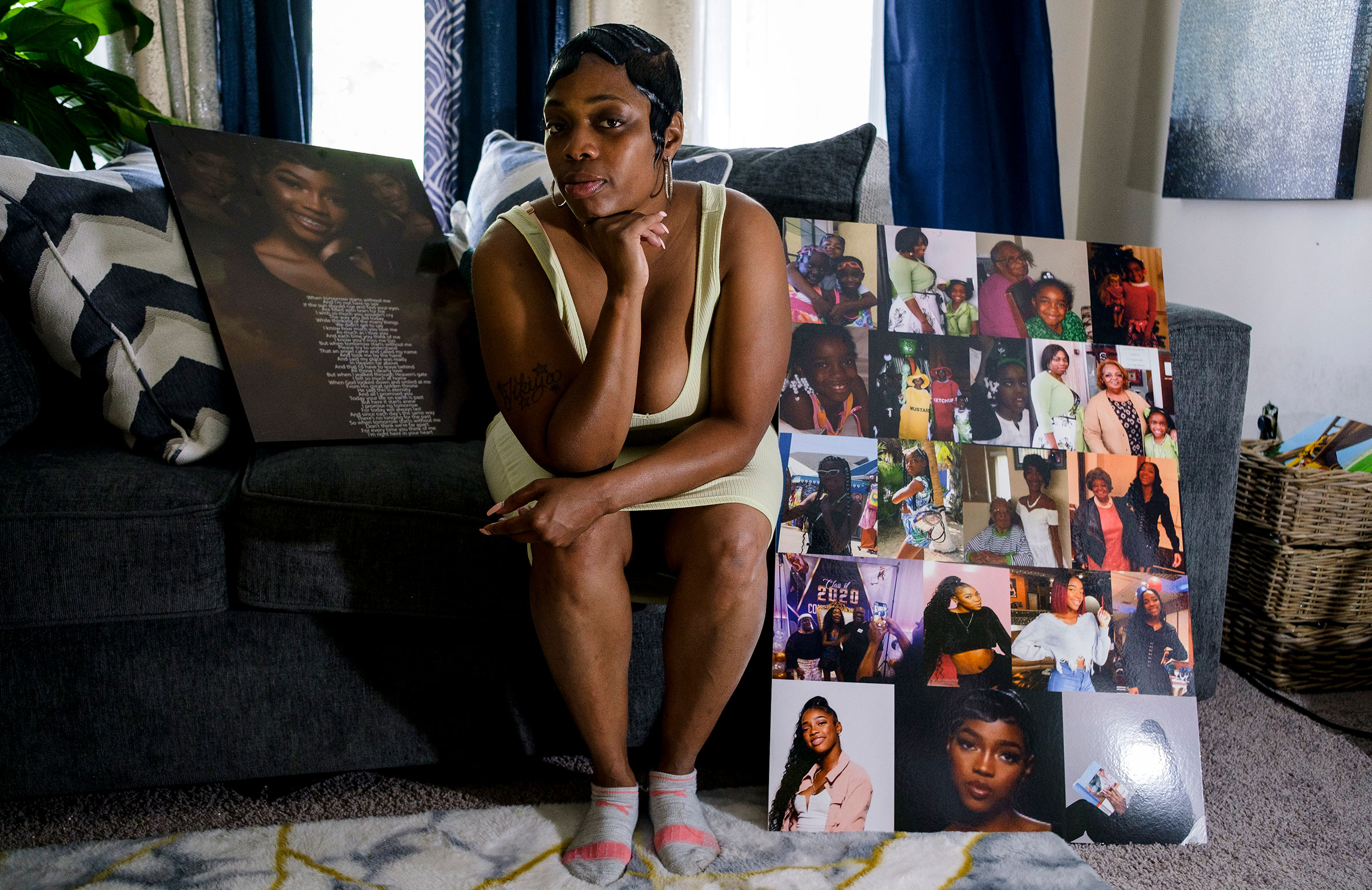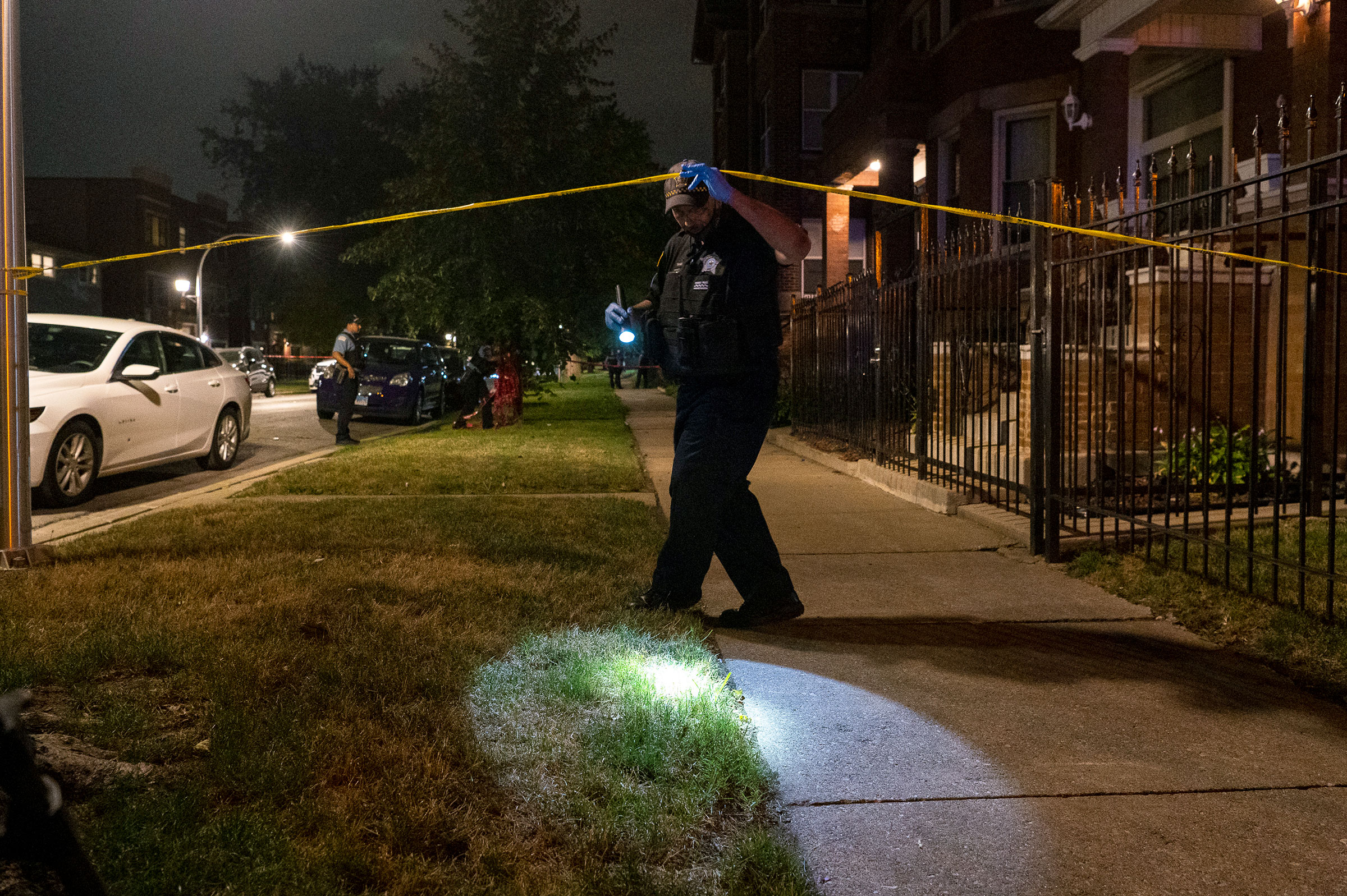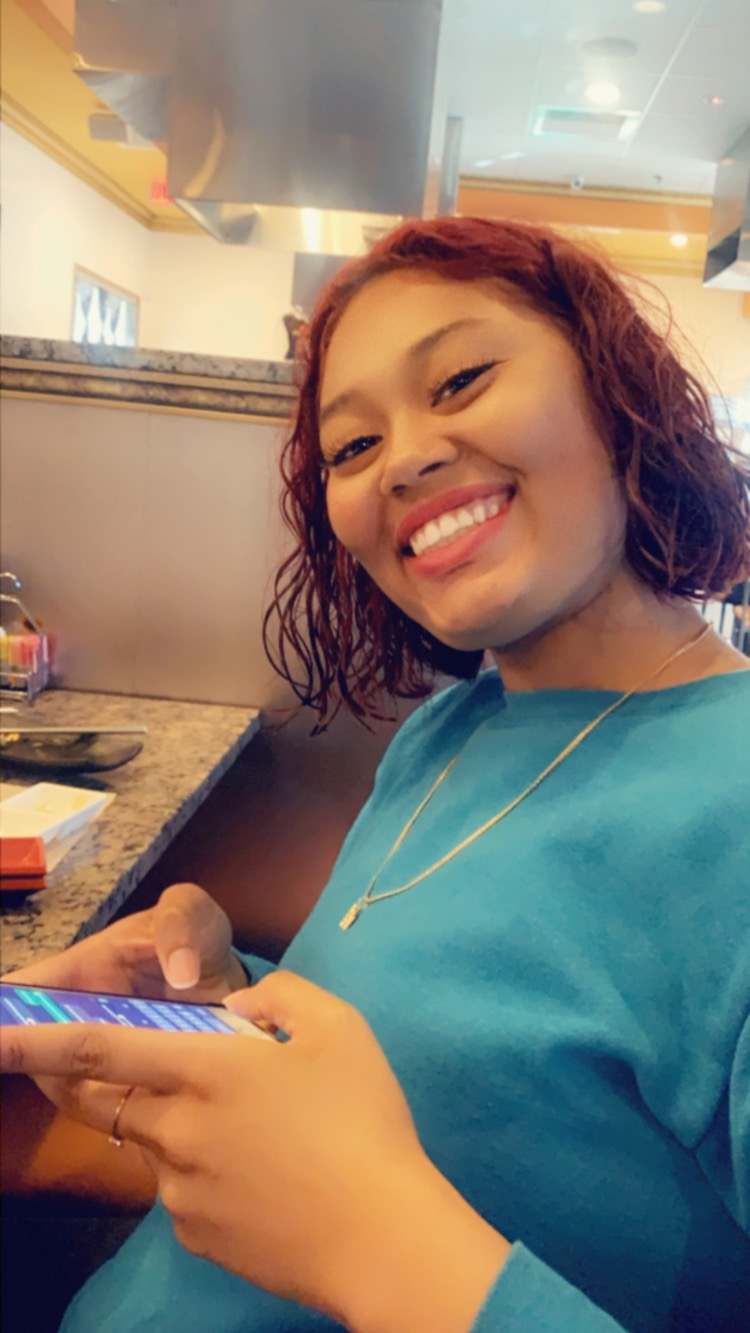
TiKiya Allen was riding her bicycle, the sun still in the sky, when she was struck in the back with a bullet and killed.
The 18-year-old nursing student, who had just finished her first year at Oakland University in Michigan, was on her way to a friend’s house in Detroit around 4:30 p.m. this past July 21 when gunfire sprayed from the open window of a car that had rolled up nearby. None of the bullets was meant to hit the teen, police believe. That fact has made it even harder for TiKiya’s mother Kai Cooks to grapple with the loss.
“It’s just not fair,” Cooks wails over and over. “I just want my baby back.”
Also this summer, a 7-year-old boy in Memphis was killed in a drive-by shooting moments after he had finished watching fireworks outside on the Fourth of July. Over the Labor Day weekend in Chicago, a 4-year-old boy was getting a haircut inside his home when two bullets pierced a window and struck him in the head, killing him, police say. Three other victims, as young as 11, were injured at a back-to-school event the same weekend when shots were fired into the crowd.
Across the U.S., more children and teens are being caught in the cross fire—a by-product of gun violence that has been exacerbated by the pandemic, according to activists and pediatric emergency-room physicians. Since 2020, children’s hospitals have been dealing with a record surge in shooting patients, with many on track to eclipse their previous totals.
Read more: The Toll of Gun Violence on One Chicago Family
Gunshot injuries at pediatric trauma centers spiked 50% across Houston and 300% in Hartford, Conn. In Fort Worth, more than 41 children have been treated for gunshot wounds at the Cook Children’s emergency department so far this year, compared with 47 in all of 2020 and 41 the entire year before. The Le Bonheur Children’s Hospital in Memphis admitted 134 shooting victims in 2020, compared with 89 in 2019. By the end of August 2021, there had been 102 admissions, topping an all-time high the hospital had recorded for the same time period in 2020.
Some experts attribute the rise in violence to pandemic-related school closures and unemployment. Strains in emotional and mental health have led to poor conflict resolution, and with millions of children at home, there is easier access to firearms, according to Dr. Regan Williams, the trauma medical director at Le Bonheur.
“There’s no reprieve,” says Dr. David Gourlay, the trauma medical director at Children’s Wisconsin, which last year had 79 patients with firearm injuries—double the number in 2019. Six of them died, marking the Milwaukee hospital’s highest death toll from shootings in a year. Many more never made it to the hospital alive.
There’s been a shooting patient almost every day this summer, Gourlay says. That’s far from ordinary for a pediatric clinic more accustomed to broken bones and flu cases. Gunshot cases spiked 65% in 2020 at Children’s of Alabama, while motor-vehicle-related injuries—the hospital’s most common trauma—dropped 13%, according to Dr. Rob Russell, its trauma director. At the St. Louis Children’s Hospital last year, as many children were coming in with gunshot wounds as with appendicitis. It’s a staggering indicator that shootings have become as regular among children as other common ailments, says Dr. Lindsay Clukies, an associate trauma medical director with the hospital. “When you go into pediatrics,” she says, “you don’t expect to see any child shot ever.”
Some pediatric emergency rooms saw another surprising shift. More children were being injured by guns out in public than at home, social workers and counselors at Le Bonheur found. “These are predominantly patients that were sitting at the kitchen table doing their homework or walking home from a park and happened to be in the wrong place at the wrong time,” Williams says. The St. Louis Children’s Hospital saw such incidents at extreme levels. Before 2020, about 30% of the hospital’s shooting patients were injured after being accidentally shot at home, largely with guns that had not been stored properly, Clukies says. Today, that figure has fallen to less than 8%. The vast majority of shooting patients at the hospital are now being wounded in acts of community violence, including drive-bys.
"Everything that goes on in this city is nothing but death."
“It’s getting worse,” says Mary Trice, an anti-violence activist in Memphis. Children are being sent to emergency rooms and morgues, Trice says, in large part because other young people are firing aimlessly and recklessly into crowds, houses and cars on the freeway. Police say the 7-year-old boy who was killed in the drive-by on the Fourth of July was a casualty of a feud that didn’t involve him. Three suspects who were arrested for the shooting ranged in age from 19 to 22.
“Everything that goes on in this city is nothing but death,” says Trice, who now drives around Memphis in a silver hearse adorned with a large pink polka-dotted Minnie Mouse bow to raise awareness of children losing their lives. Inside is an empty child-size casket.
Activists paint a similar picture in Baltimore, where stray bullets have injured a 5-year-old sitting in his bathtub and a 10-year-old buying a bag of Cheetos earlier this year. Nearly half of all murders in the city took place in the daytime in 2020, according to an analysis by Sean Kennedy, a researcher with the Maryland Public Policy Institute. Kennedy says it shows an “increase in brazenness” by violent offenders. “It’s at the point where people are afraid to sit on their own steps,” says Val Jenkins, founder of Hug Don’t Shoot, a Baltimore nonprofit. “They’re afraid to go to the stores or allow their children to go to the park.”
Even in Times Square this year, a 4-year-old child was among at least four bystanders hit by stray bullets in New York City’s famous tourist destination. The shooting of unintended targets has become part of a “recurring theme” in the city, NYPD chief of detectives James Essig said at an August news conference following a gang-related shooting in Queens that injured seven adult bystanders.
“More shots are being fired on our streets, so more bystanders are getting hit. It’s that simple,” Police Benevolent Association president Patrick Lynch said in a statement to TIME. “Bullets don’t discriminate.”
After the deadly Labor Day weekend in Chicago, Police Superintendent David Brown said the children being shot are rarely, if ever, the intended targets. “These innocent young children should not be the by-product of your criminal behavior,” Brown said at a news conference, directly addressing the shooters. “They have a full life ahead of them.”

For children who survive shootings, the wounds are more than just physical. Childhood trauma can have lifelong effects on mental health. Survivors often struggle with post-traumatic stress, anxiety or mood disorders, which can impact how they perform at school or build relationships for decades to come. “It’s really sad for me when I see a 3-year-old, and I think, ‘God, what is the rest of this kid’s life going to be like?’” says LeBonheur’s Williams.
There’s also the concern of cyclical violence. Perpetrators of gun violence are overwhelmingly victims of violence themselves, according to Paul David Smith, director of reconciliation with the National Network for Safe Communities, a research center at John Jay College. Smith says the pattern occurs when young shooting victims seek retribution, particularly in areas with historically high rates of gun violence. “Today’s victim who survives could eventually be tomorrow’s shooter,” he says.
"It's at the point where people are afraid to sit on their own steps."
A 2020 Center for Court Innovation study, which sought to find out why young people were carrying guns, found some evidence to support that. Out of 330 teens and young adults surveyed in three New York City neighborhoods with higher rates of gun violence than the city as a whole, 81% said they had been shot or shot at. Violence and trauma factored into nearly every gun-related decision they made, the researchers found. Many of the respondents, ages 16 to 24, said they relied on guns for their safety and to aid in crimes, like robberies, for financial survival when they couldn’t find work. While the interviews were conducted pre-pandemic, researchers say they offer key insight into how a crisis that has caused more unemployment, anger and fear may have made things worse.
Read more: Do Mass Shootings Mark a Return to ‘Normal’?
In 2020, gun homicides and non-suicide-related shootings claimed more than 19,000 lives—the highest death toll in more than 20 years, according to data from the Gun Violence Archive, a nonprofit that tracks shooting incidents. Homicides rose 30% from the year before, mostly because of gun violence, according to Thomas Abt, a senior fellow with the Council on Criminal Justice and author of Bleeding Out: The Devastating Consequences of Urban Violence—and a Bold New Plan for Peace in the Streets. Experts agree that multiple factors, including the pandemic and social unrest following George Floyd’s killing, converged to increase violence, beginning in the spring of 2020. But because of scarce research, there’s no consensus on why or how each element contributed to the surge. While gun-violence-prevention groups may blame record gun sales, a recent study found no clear link between widespread firearm purchases and increases in interpersonal gun violence. There’s little evidence, too, that jail and prison releases or bail reforms contributed. Abt says more research is needed to better understand the underlying dynamics of the recent rise in violent crime and to pinpoint which factors have been most responsible.
Already this year, at least 13,000 people have been killed by guns, according to the Gun Violence Archive’s latest tally. More than 1,000 of them were children and teenagers. But no matter their age, every victim was someone’s child, and many left loved ones who never imagined losing a son or daughter this way.

"No one's exempt. My child was getting food at a taco truck."
Before this summer, Brenda Gilliam-Miller didn’t spend a lot of time worrying about flying bullets. She didn’t live in a particularly violent area in Phoenix, and her 23-year-old daughter Destiny McClain was a homebody who preferred watching TV with her sisters in quirky pajamas and snuggling up to her Winnie the Pooh stuffed animals and beloved pitbull Capone.
But on July 18, when Gilliam-Miller woke up at dawn and realized McClain had not come home from her first night out with friends in a year or answered any texts, her gut told her to fear the worst. Gilliam-Miller, 47, tracked the GPS coordinates of her daughter’s phone to a local taco truck, which was roped off with yellow caution tape when she arrived. After what seemed like eternity, the police broke the news to her: McClain had been killed in a random shooting. The daughter who only last year had surprised her at work with a vase of bright orange roses—for no special occasion—was gone.
Witnesses later helped Gilliam-Miller piece together her daughter’s final moments. While waiting in line to order a cheese quesadilla, they said, McClain was shot in the chest. The bullets had come whizzing out of nowhere. Then the part that guts Gilliam-Miller the most: her daughter had bled out in the arms of a stranger, as he reassured her she’d be O.K.

"More shots are being fired on our streets, so more bystanders are getting hit. It's that simple."
“I never thought that I’d be personally affected by gun violence,” Gilliam-Miller says. “But no one’s exempt. My child was getting food at a taco truck.”
Clinging to every last memory of her daughter, Gilliam-Miller went through two months of footage captured by her doorbell camera, saving 109 videos of McClain coming and going from work. In some clips, she can only briefly hear her daughter’s voice. But she saves those too, because, she says, “it’s all I have left of her.”
Nearly two months later, Gilliam-Miller still doesn’t know who pulled the trigger. Neither does Kai Cooks, 39, whose daughter, TiKiya Allen, was killed in Detroit around the same time. In both cases, police have made no arrests.
The mothers, meanwhile, are lost in mourning. Some days, Cooks aches for TiKiya so badly that she wishes she were also dead. She can barely get out a word when she tries to speak through her sobs. The only time there’s a long enough pause in her crying is when she relays her favorite memories with TiKiya, her best friend, who was just as attached to Cooks as her mother was to her. While TiKiya lived on campus during her freshman year in college—a milestone moment of freedom for any teen—she still made the roughly 90-minute round trip home almost every weekend to be near her mom. After walking through the door, she’d jump on Cooks and beg her mom to whip her up a plate of shrimp alfredo.
Cooks begins to cry again. “I just miss going to get ice cream with her,” she manages to say.
“I promise you,” she adds, “people don’t know what I’m going through.”
More Must-Reads from TIME
- Cybersecurity Experts Are Sounding the Alarm on DOGE
- Meet the 2025 Women of the Year
- The Harsh Truth About Disability Inclusion
- Why Do More Young Adults Have Cancer?
- Colman Domingo Leads With Radical Love
- How to Get Better at Doing Things Alone
- Michelle Zauner Stares Down the Darkness
Contact us at letters@time.com